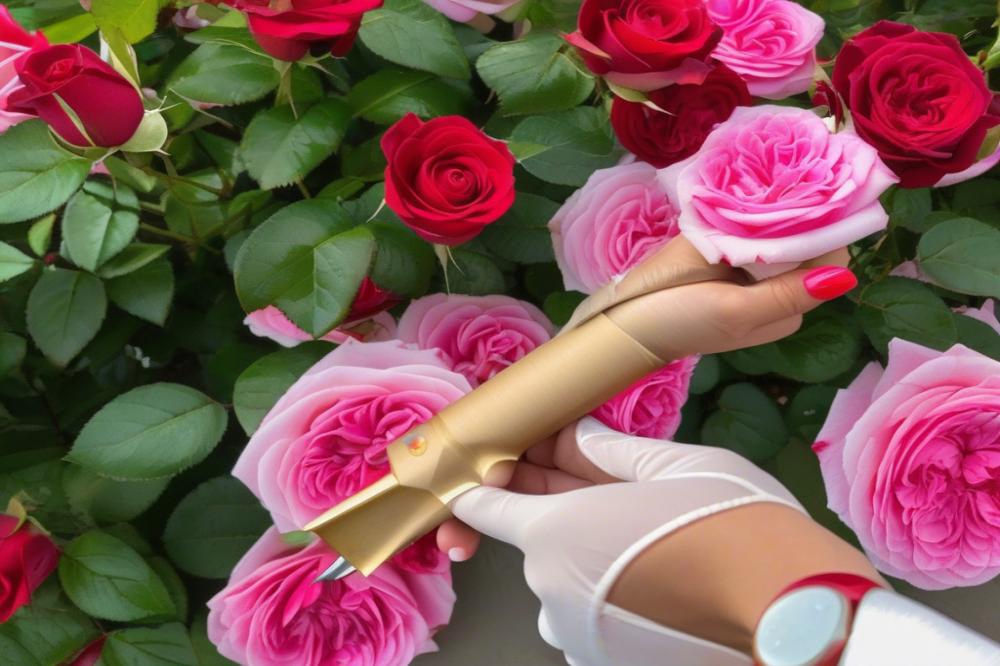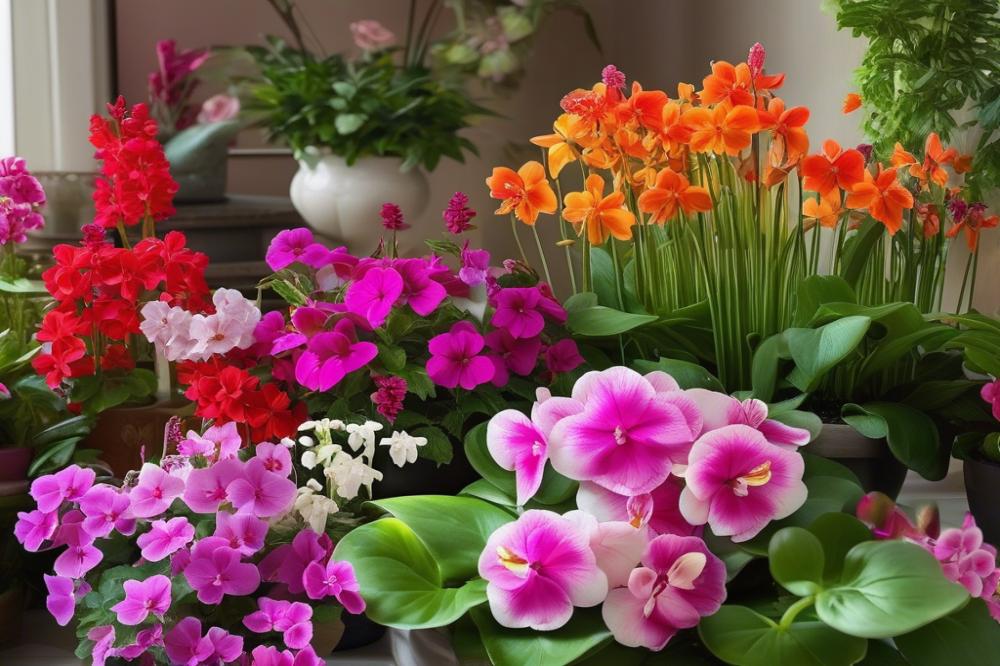Understanding rose propagation
Roses are among the most cherished flowers in the gardening world. Propagating them can be a fulfilling and rewarding experience. When gardeners successfully reproduce these beautiful plants, they can enjoy an abundance of blooms without the cost of purchasing new rose plants. rose propagation allows anyone to create their own stunning displays in their gardens.
Why is rose propagation so important? It plays a vital role in enhancing the horticulture landscape. By growing roses from cuttings, gardeners can select their favorite varieties and maintain plant care routines suited to their specific needs. This method of reproduction provides a personal touch to any garden and can even lead to the development of unique hybrid varieties over time.
Starting a garden from cuttings offers numerous benefits. It is often more economical compared to buying nursery plants. Additionally, plants grown from cuttings typically adapt well to their new environment. When you propagate roses, you can create a special connection to your garden. Each rose cutting carries with it a story, a memory, or a sentiment that can last for years.
Whether you’re a novice or a seasoned gardener, learning about the process is essential. Mastering rose propagation not only invites beauty into your outdoor space but also fosters patience and appreciation for nature. With the right techniques, including the use of rooting hormone and proper pruning, anyone can achieve great results. So, let’s dive into the world of rose cuttings and explore how to turn your dreams of a magnificent rose garden into reality!
Understanding Rose Varieties

Many types of rose plants exist, each variety offering its own beauty and charm. When selecting roses for cuttings, consider hardiness and growth habits. Some varieties, such as hybrid teas, floribundas, and climbers, can thrive well in different settings. Thus, knowing the right kind is crucial for success.
Choosing the right rose varieties may feel overwhelming. However, some plants are better suited for propagation than others. For beginners, hybrid tea roses are forgiving and popular among gardeners. They root well from cuttings and produce lovely blooms, which makes them rewarding outdoor plants.
Factors to Consider in Horticulture for Rose Propagation
Several aspects of horticulture come into play when propagating roses. First, the season affects the success rate. Early summer offers ideal conditions for taking cuttings. Warmer temperatures promote root development, increasing the chances of success.
Additionally, plant care is vital during this process. Use clean, sharp pruning shears to take healthy cuttings. Each cutting should be about six inches long with several nodes to increase rooting potential. Applying rooting hormone can also boost your chances, guiding the cutting to establish roots more quickly.
A greenhouse or a shady spot in your garden can help maintain humidity. Keeping cuttings moist helps prevent wilting. Garden tips often suggest misting the cuttings regularly to support healthy growth.
Lastly, patience is crucial. Understanding rose propagation takes time and practice. By paying attention to the variety you choose and the right conditions for growth, you can enjoy a thriving rose garden in no time.
Preparing for Propagation

Tools and Materials Needed for rose cuttings
Gathering the right tools makes a significant difference in successfully propagating roses. You will need clean pruning shears for cutting stems. A sharp knife can also work for this task. Using a pot with drainage holes is essential for the cuttings. Consider potting soil that drains well, as it helps prevent rot. A rooting hormone can boost your chances of success. It’s beneficial for encouraging those cuttings to develop strong roots. Keeping a spray bottle nearby is wise. Mist the cuttings regularly to maintain moisture.
Selecting Healthy Stems for Cuttings
Choosing healthy stems is critical for successful rose propagation. Look for strong and disease-free stems. They should be about six inches long and have at least two or three leaf nodes. A good time to cut stems is after the flower has bloomed, but before it fades. Stems showing new growth are often the best choices. Avoid woodier parts of the plant, as they may not root well. Always prune with a clean cut to reduce the risk of infection.
Timing for Optimal Success in Outdoor Plants
Timing plays an essential role in plant care when propagating roses. Late spring and early summer are often the best times for taking cuttings. This is when outdoor plants actively grow. Weather conditions can also affect success. Ideally, choose a day when it’s cloudy or mildly warm; this reduces stress on the cuttings. Taking cuttings in the morning is a good practice, as the plant’s energy is high. If you have a greenhouse, consider applying rose propagation techniques during these ideal conditions.
Taking and Preparing the Cuttings

Step-by-step process for taking cuttings
Start by selecting a healthy rose plant from which to take your cuttings. Look for stems that are about 6 to 8 inches long, ideally from this year’s growth. Early morning is the best time to cut, as temperatures are cooler and the plant is well-hydrated. Use sharp, clean pruning shears to make a clean cut just below a leaf node. This node is crucial, as it’s where new roots will develop. Handle the cuttings carefully to avoid bruising them.
How to properly prune rose stems
Pruning is essential in rose propagation. Begin by removing any damaged or dead wood to promote healthy growth. When you prune, make angled cuts to help prevent water from pooling on the stems. The angle also encourages better healing and rooting. Be mindful of the overall shape of the plant while pruning. This method not only helps in getting strong cuttings but also keeps the rose plants looking their best.
Preparation of cuttings: trimming and stripping leaves
After taking the cuttings, it’s time to prepare them for propagation. Trim the bottom end of each cutting to about half an inch above the last leaf node. This encourages rooting and reduces the chances of rot. Stripping the leaves will prevent moisture loss. Remove the lower leaves, leaving just a couple of leaves at the top. Be gentle so you don’t damage the stems. Optionally, you may choose to dip the cut ends into rooting hormone. This can boost the chances of success when it comes to rooting and helps in plant care.
Using these steps, you are gearing up for successful rose propagation. Each cut, trim, and scrape plays a vital role in the process of creating new life from your beloved outdoor plants. Follow these tips closely, and soon you will see new roots forming in your greenhouse or garden.
Using Rooting Hormone

Rooting hormone plays a significant role in rose propagation. It helps cuttings develop roots more quickly and effectively. By applying this substance, you can increase your chances of success. Various types exist, including powdered, liquid, and gel forms. Each can be useful in different situations, so knowing the right one for your needs is essential.
The Role of Rooting Hormone in Rose Propagation
This hormone contains hormones that stimulate root growth. When you take cuttings from healthy rose plants, they can sometimes struggle to grow roots on their own. That’s where rooting hormone comes into play. It shortens the time needed for new plants to establish themselves. For outdoor plants, this can mean the difference between a flourishing garden and a disappointing attempt.
How to Apply Rooting Hormone Effectively
Applying rooting hormone is a straightforward process. First, prepare your cuttings by trimming them to a manageable size. Remove any flowers or buds to focus energy on root development. Next, dip the cut end of each cutting into the hormone. After this, gently tap off any excess. Finally, plant the cutting in a suitable growing medium and water it lightly. Always remember to keep the soil moist but not soggy.
Tips for Selecting the Right Rooting Hormone
Several factors can influence your choice of rooting hormone. Consider the type of rose you are propagating. Some varieties might respond better to specific formulations. A powdered version is excellent for many situations, but gels can be more convenient for beginners. Also, check for brand reviews to discover which products have yielded the best results in horticulture circles. Don’t overlook the importance of organic options if you prefer natural plant care methods.
Planting the Cuttings
Step-by-step process for planting cuttings in a greenhouse or garden
Starting the planting process requires you to select the right location. If you’re using a greenhouse, position your cuttings on a bench with good light. Outdoor plants need protection from direct sunlight initially. Lessen stress on your cuttings by planting them in the evening or on a cloudy day.
Next, prepare your pots. Use containers that have drainage holes at the bottom. Fill them with a suitable potting mix. A mix of peat, perlite, and vermiculite works well for rose propagation. Place your cuttings into the soil with the lower end buried about an inch deep. Firm the soil around the cuttings for stability. It’s important that the cuttings are upright and secure.
After planting, cover the pots with plastic bags or a humidity dome. This helps retain moisture. Place them in a warm spot, ideally between 70 to 75 degrees Fahrenheit. Make sure they are not in direct sunlight to avoid overheating.
Best potting mix for rose cuttings
A well-draining potting mix is crucial for rose plants. Look for a mix designed specifically for propagation. Combining equal parts of peat moss and perlite can create a balanced medium. You want to avoid heavy soils that hold too much water. Good drainage is key to preventing rot.
Adding a bit of compost can boost nutrients without overwhelming the cuttings. This extra organic matter supports healthy growth. Using a clean mix minimizes the risk of disease. Remember, your potting mix is the foundation for successful plant care.
Watering and initial care for the cuttings
Proper watering is vital in the early stages. Keep the soil lightly moist, but not soggy. Water the cuttings gently to avoid disturbing them. Using a spray bottle can help maintain humidity without overdoing it.
Routine checks for moisture levels will help you manage the environment. Adjust as necessary depending on the humidity. If the leaves start to wilt, it’s a sign they need more water. On the other hand, if they appear yellow, you may be oversaturating the soil.
Once you see new growth, it’s a good indicator of rooting success. From there, gradually acclimate them to outside conditions. This stage, known as hardening off, prepares them for outdoor life. Keep tabs on their progress, and don’t hesitate to adjust your care routine based on their needs. Your dedication will lead to thriving rose plants.
Creating Ideal Conditions
Successful rose propagation relies on creating a nurturing environment for cuttings. Humidity and temperature play critical roles in rooting. Cuttings thrive in a warm space, ideally around 70°F to 75°F. This range encourages root development and keeps the plants strong.
Maintaining Humidity and Temperature for Successful Rooting
A high level of humidity is essential for cuttings to succeed. Consider using a humidity dome or misting the cuttings regularly. These methods help maintain moisture levels. Without enough humidity, cuttings can dry out and die. Indoor settings often have lower humidity, so monitoring is important.
Using Mini-Greenhouses or Plastic Covers for Moisture Retention
Mini-greenhouses or plastic covers create a mini ecosystem. When placed over your cuttings, they trap moisture. This reduces the need for constant watering. Choose a cover that allows some air circulation. Too much moisture buildup can lead to mold growth on cuttings. It’s a delicate balance, but worth the effort!
Monitoring Growth and Health of Cuttings
Regularly check on your cuttings to assess their health. Look for signs of new growth, which indicates that rooting is occurring. Examine for any mold or discoloration as well. Healthy cuttings will show vibrant green leaves. If you spot any problems, address them immediately. In your plant care routine, consider applying a rooting hormone to boost effectiveness. Together, these practices support successful rose plants.
Ultimately, creating the right environment is key in horticulture. Follow these garden tips to cultivate strong and healthy cuttings. With the right care, your efforts in propagating roses will be rewarded with beautiful blooms in no time.
Transplanting and Care
When and How to Transplant Rooted Cuttings
Transplanting rooted cuttings is an exciting step in rose propagation. Wait until your cuttings have developed a strong root system. This usually takes about four to six weeks. Choose a cloudy day or transplant in the evening. This minimizes shock to the young plants. Carefully remove each cutting from its pot while disturbing the roots as little as possible. Dig a generous hole in the garden or in your desired outdoor pots. Place the cutting in the hole and cover it with soil gently. Water the new planting deeply to encourage the roots to settle into their new environment.
Ongoing Plant Care for Young Rose Plants
Daily care can be crucial for your young rose plants. They thrive with consistent moisture but avoid overwatering. Keep the soil evenly moist. Providing proper sunlight is vital as well; roses typically need about six hours of sunlight daily. If your cutting was treated with rooting hormone before planting, it can provide a head start. Regularly check for pests, as young plants are more vulnerable. If you spot any trouble, act quickly with natural remedies or insecticidal soap.
Garden Tips for Continued Health and Growth
Pruning is an important aspect of horticulture that promotes bushy growth. Once your plants are established, consider light pruning to shape them. Ensure that they get enough nutrients by using a balanced fertilizer. You can also apply compost to provide natural nourishment. Watching for signs of distress or nutrient deficiency can prevent many issues. Protect them during harsh weather; consider covering them during frost. If space allows, establishing a greenhouse can also be beneficial for continued plant health. Maintaining a keen eye on your rose plants will lead to thriving blooms and vibrant colors.
Final Thoughts
Propagating roses from cuttings is a rewarding endeavor. Not only does it allow you to grow beautiful flowers, but it also connects you to nature in a meaningful way. This form of rose propagation makes it possible to create numerous plants from just a single one. Each cutting offers a chance to cultivate something special right in your own garden.
Don’t hesitate to experiment with different varieties. Each type of rose has its own charm and beauty. Trying various kinds can lead to discovering new favorites. You might be surprised by what thrives in your backyard. Enjoy the process; it can be a delightful adventure filled with learning.
growing roses through cuttings brings immense joy. Watching your plants develop, bloom, and fill your garden with color is unmatched. There’s something magical about nurturing a simple cutting into a vibrant flower. As you embark on your gardening journey, remember to celebrate each small success. Every step forward in rose cultivation is a step towards creating your own personal paradise.



